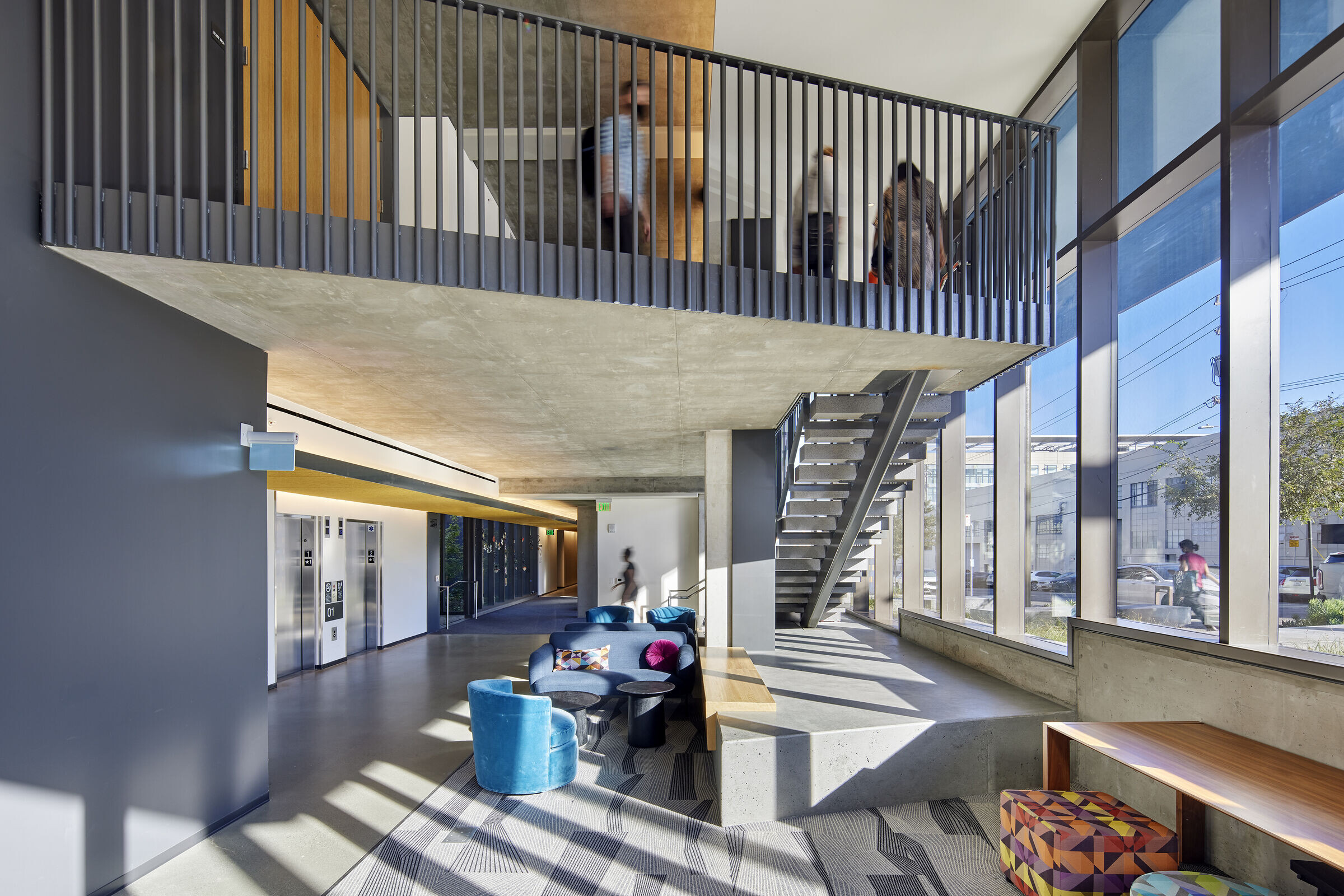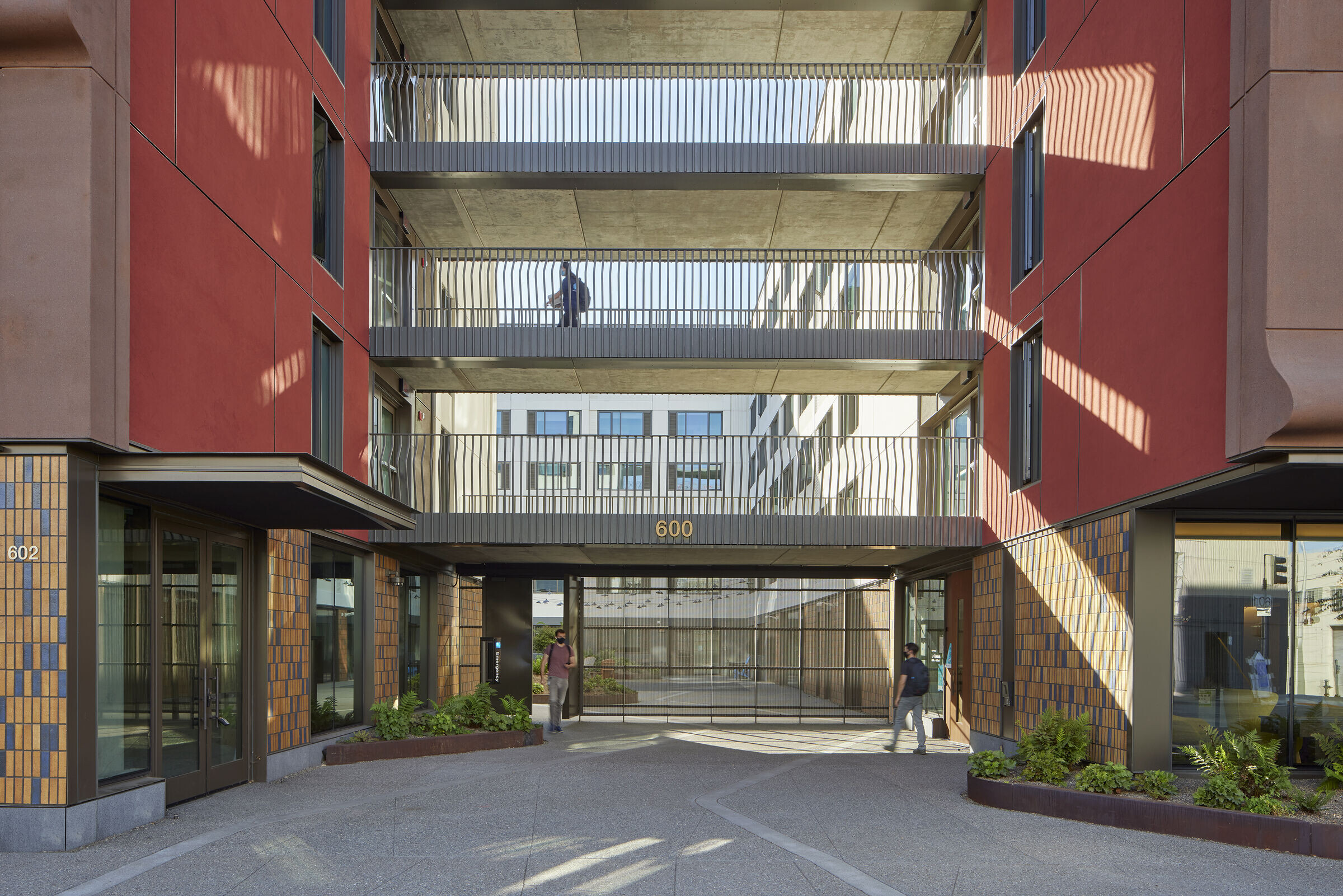The Tidelands provide 595 below-market-rate micro-apartments for over 700 medical students and trainees in San Francisco's Dogpatch neighborhood. Responding to San Francisco's urgent need for high-density affordable housing, the project draws on its formerly industrial, but rapidly evolving, urban context to create a convivial, sustainable, humane, and functional home for fixed-income emerging medical professionals. Adapting the identity and values of the University of California San Francisco to the lively cultural and arts-focused character of the neighborhood, the project is highly energy efficient, resilient, and community-focused. Born of a hybrid Integrated Project Delivery model harnessing collaboration between designers, contractors, the client, and neighborhood stakeholders, the Tidelands marries high design aspirations with innovative construction techniques to create a welcoming, accessible, and vibrant addition to the Dogpatch.
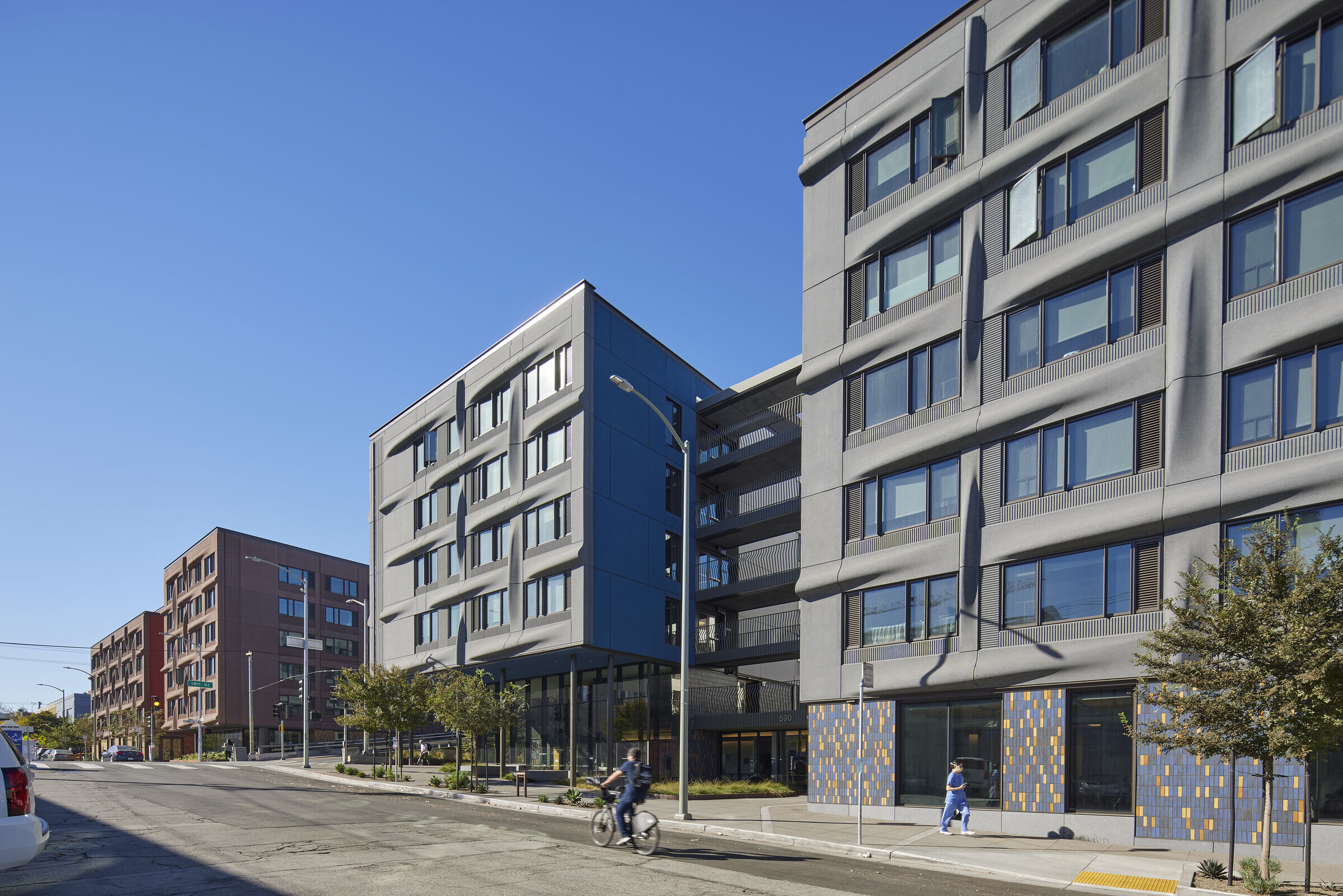
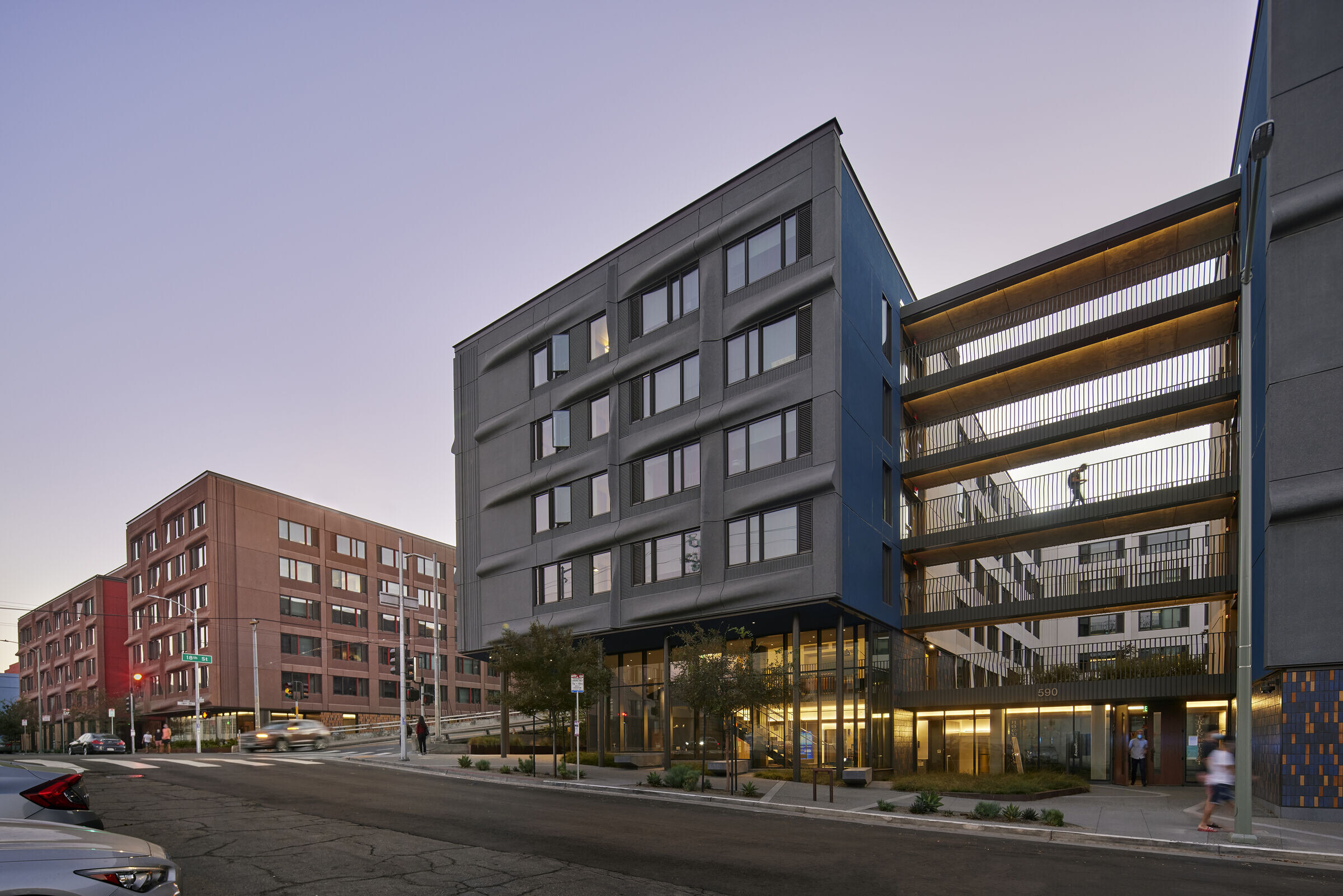
Comprising of studio, efficiency, and two-bedroom microunits at 40% below market rate, the Tidelands fundamentally benefits the larger community by improving access to affordable housing and reducing the housing burden on the adjacent neighborhood. The buildings' undulating facades create a unifying identity across street addresses while embracing the neighborhood's free-wheeling character. The project also includes a retail space for a small community-focused grocery store, the addition of two new densely planted mid-block public paseos connecting Minnesota and Indiana streets (connections which haven't existed for decades), new planted setbacks with benches, and two community meeting rooms that are available for reservation by neighborhood groups.
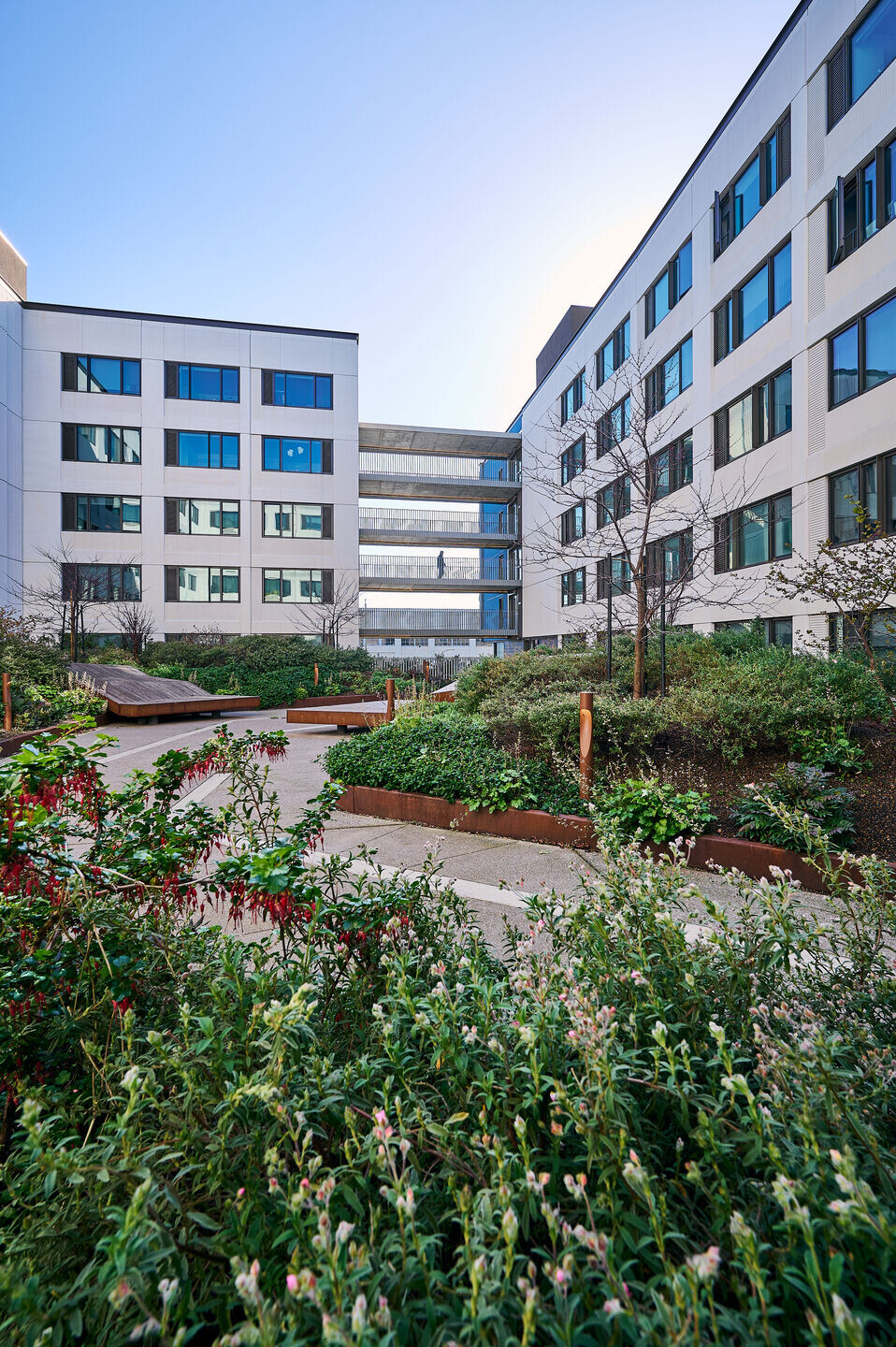
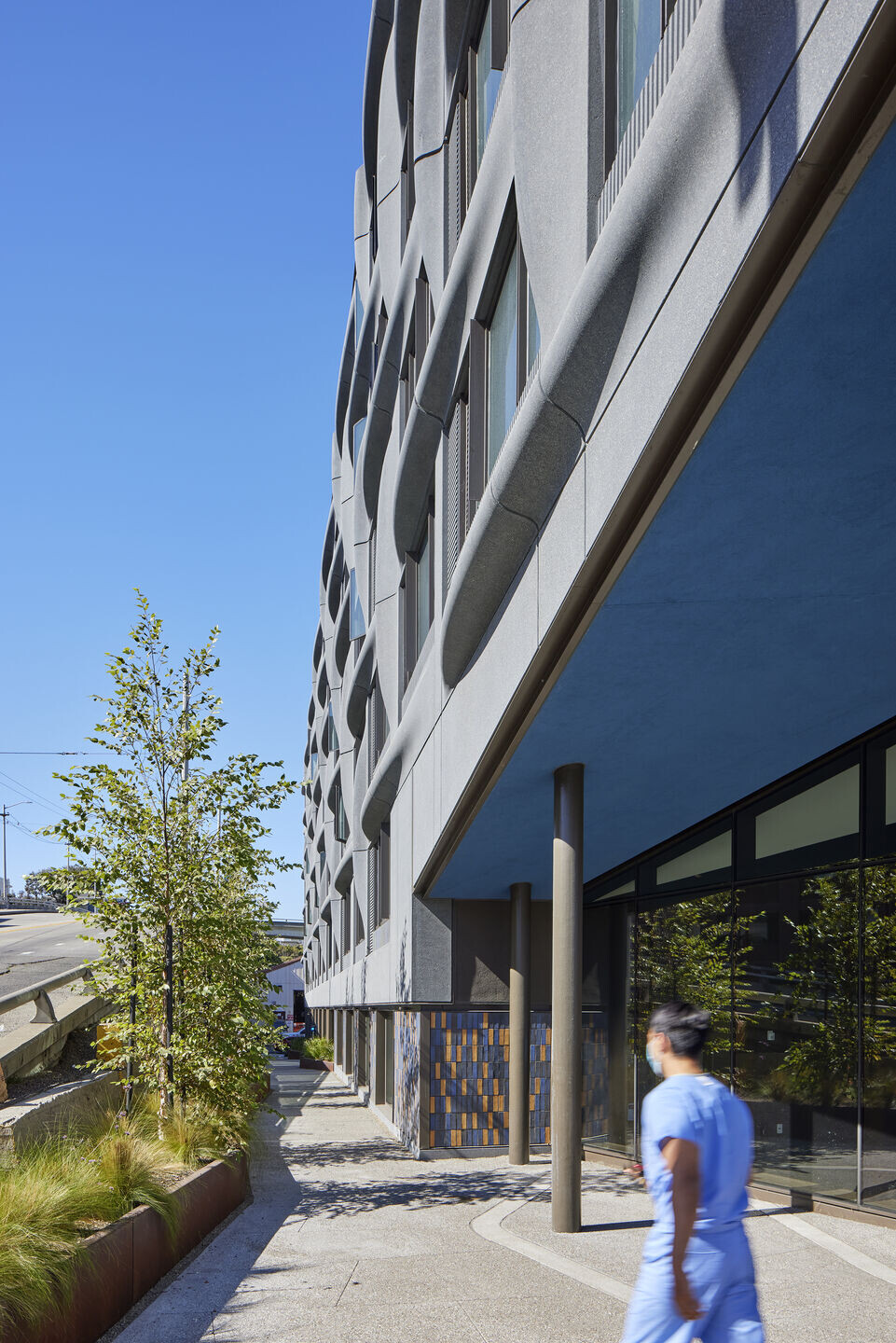
A series of natively planted, low-irrigation outdoor spaces surround and snake through the Tidelands, replacing two dilapidated former warehouses with new habitat for local wildlife. By pulling both buildings back from the overpass that cuts between them, two new mid-block pass-throughs were created, providing relief for people and wildlife, and planted zones for capturing and storing rainwater. Similarly, two interior courtyards interact with the street at open-air circulation bridges, allowing light, air and greenery to spill out to the street. These outdoor spaces offer opportunities for respite, providing thoughtfully humane and carefully dense housing.
